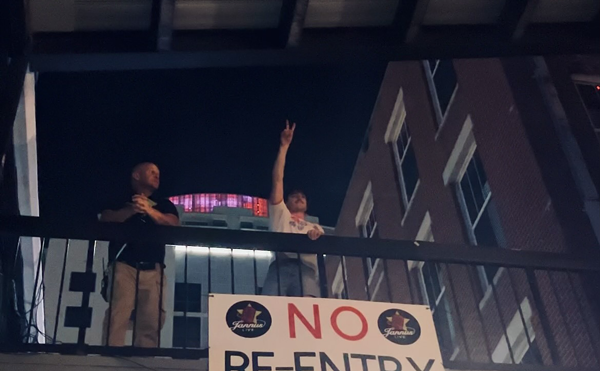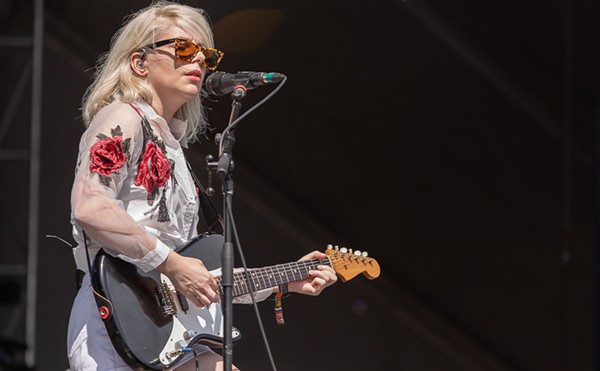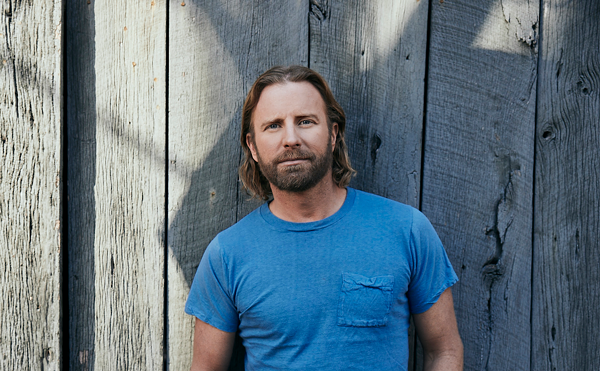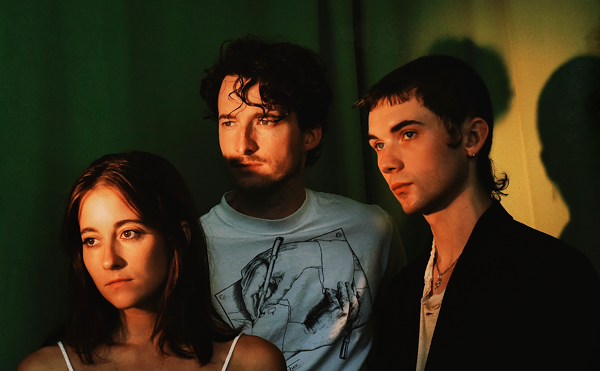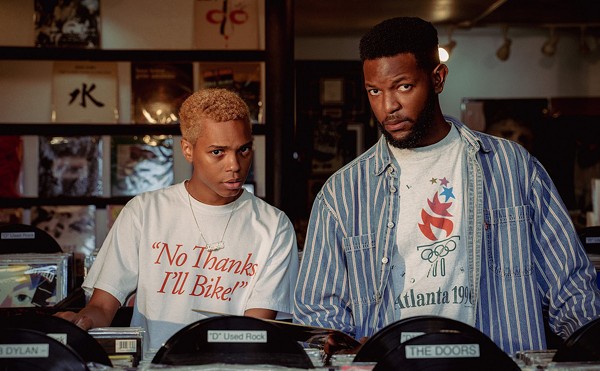While his hip-hop peers have been caught up in beefs or throwing cross-eyed drug parades, Compton rapper Kendrick Lamar has been sailing through the year low-key yet sky-high. His third album To Pimp A Butterfly has withstood the test of time, maintaining its relevance culturally and musically since its release in March and showing no signs of losing steam any time soon despite nay-sayers ill-convinced of its staying power because of the sonic risks he took, preferring a grooving, jazz-rap sound produced with live instrumentation to the bass-pounding laptop-spawned trap beats that dominated other popular releases of 2015. These risks just happened to be worth it, earning Kendrick 11 Grammy nods and top spots on nearly every music site’s year-ending Best of list, including the honor of being named as Rolling Stone’s "Album of the Year." While he isn't perfect, Kendrick Lamar risked it all with this album, rapping frankly about all of his demons, internal and otherwise. TPAB provided a welcome balance and offered an opposite perspective on the typical rapper facade/lifestyle, with candid verse-slinging about being on the wrong side of drugs, liquor, sex, fame, and money, the same themes that dominate radio and club/trap rap. It’s a multi-layered masterpiece that makes people uncomfortable, and that’s why it deserves the accolades.
Kendrick purposefully went against the grain to make this album stand out, spitting like he’s doing slam poetry and continuing the hip-hop tradition of incorporating jazz and funk elements as driven by live players; horns and saxophones from band leader Kamasi Washington and multi-instrumentalist Terrace Martin, trumpets via Ambrose Akinmusire, and keys from the uber talented jazz pianist Robert Glasper. The album is an exhilarating conglomerate of bebop, g-funk, boom bap, and blues, but nonetheless, TPAB is unmistakably hip-hop. While it is strikingly different from what we've gotten used to hearing in the mainstream these last few years, it shouldn't be dismissed solely because of the jazzy production.
Lyric-wise, Kendrick goes deep, crafting a sort of hip-hop epic. On its surface, "These Walls" — one of the biggest tracks off TPAB and apparently Kendrick's personal favorite — seems like it could be inspired by the old idiom, "If these walls could talk." The song is actually an elaborate, multi-layered allegory using walls as a metaphor for prison walls, barriers created by racism, and the confines of his own mind and consciousness, though the vaginal wall metaphor is the one that's most obvious to discern. The song is also a reflection of all the things Kendrick is dealing with at present: fame and how he uses it, his relationship with the baby's momma of the gangbanger who killed his friend, the effects of systematic racism, and other various internal conflicts. The carefree, playful video for "These Walls" juxtaposes a jovial Kendrick Lamar — who hits the 'quan with Terry Crews and gets twerked on so hard that he crashes through several walls — against the heavy, potent lyrics. In “u,” Kendrick lays it all out with melancholy, straightforward commentary on his depression and alcoholism, repeating the phrase, “Loving you is complicated.” He raps candidly and aggressively, berating himself about how he has contemplated suicide while also examining his feelings of guilt for not visiting a dying friend who got shot in a drive-by, disappointment for not being able to reach his pregnant teenage sister, and his doubt himself and lack of confidence amid questioning whether or not he is worthy of all the praise he's received, since he couldn’t even help his own sister.
During his Kunta's Groove Sessions, Kendrick jam-packed venues with hip-hop lovers chanting positive affirmations, singing "I love myself," when he performs "i," a stark contrast from "u." The former is a song that grew from his need to express self-love after being in an environment that lacked love, and the song finds him detailing his personal quest for self-redemption while battling depression.
Though depression is one of TPAB’s main themes, Kendrick doesn’t stop there. On “Complexion (A Zulu Love),” Kendrick and Rapsody tackle colorism and light-skin/dark-skin stereotypes in the black community, emphasizing that it doesn’t matter whether you are light or dark, blue or piru, there is beauty in each of us and we are all worthy of “Ubuntu"; the Zulu philosophy emphasizes showing love, mercy and kindness to others regardless of their race or background. On the following song, “The Blacker the Berry,” Kendrick takes on gang violence as a form of racialized self-hatred, questioning his own hypocrisy as to why he’s upset about white-on-black violence and not the violence that happens in the black community, sharply contrasting the Ubuntu philosophy on the previous track.
Another common theme on TPAB is the dark sides of fame. On songs like “Wesley’s Theory,” “Institutionalized,” and “For Sale,” he talks about how black youth and musicians are brainwashed, tempted, and even oppressed by the idea of of getting rich and having money to show off, and getting pimped by the entertainment industry in the process.
With albums like Good Kid, M.A.A.D City and To Pimp A Butterfly, Kendrick Lamar has given a voice to a generation of youth in hip-hop that may have not otherwise had one. Who speaks for the kids that feel like they have to choose between red and blue? In world where anti-blackness runs rampant, who will tell us that we gon' be alright? This year at the 20th anniversary of the Million Man March in Washington, D.C., thousands of protesters chanted the lyrics to "Alright," one of TPAB's standout tracks, in which Kendrick takes an assertive stance against police brutality amid realizing and reassuring himself that he can overcome his failures and adversities. The track's hook has become a mantra for Black Lives Matter activists across the country, and many have found some comfort, hope and assurance in the lyrics. Even the POTUS admits his favorite song of the year is one of TPAB’s gems, “How Much A Dollar Cost?” which finds Kendrick telling the story of how he unknowingly meets a homeless man who happens to be Jesus Christ and selfishly denies him a single dollar, costing him a spot in heaven.
While Kendrick gets candid and introspective, the album doesn’t go without braggadocio. Early on, Kendrick asserts himself as "King Kunta," a rap god who’s got the yams and is not to be fucked with by non-rapping rappers and their ghostwriters.
The album ends with Kendrick reciting the poem that was excerpted throughout the album, and then interviewing one of his idols and one of hip-hop's most revered rappers, Tupac. The interview helps bring the album full circle, with Kendrick and Tupac discussing some of its common themes, like fame, racism, and sanity. Kendrick Lamar uses this interview to look to the past to help create a better future and offer some wisdom for the current generation about how to deal with these issues, while still leaving it open for listeners to question their own perspectives and find their own answers when Tupac fades away at the end.
Though you may not agree with his views or how he goes about expressing them, it’s undeniable that with TPAB, Kendrick has spurred relevant dialogues about police brutality, racism, self-hate, hypocrisy, and mental illness in the black community. While doing so, Kendrick was able to remain true to himself and his artistry while helping push the culture forward, letting himself be transparent and vulnerable on this album, saying exactly what he means, regardless of whether or not he’ll be deemed a hypocrite. To Pimp A Butterfly is a dense album that supports the idea that good art is supposed to make you uncomfortable. Even Kendrick admits that he was uncomfortable at times while recording the album. And at some points, though the album may seem heavy and bleak, it concludes as a declaration for Kendrick to overlook the doubts, to continue to inspire and innovate, and to triumph against adversity and work at being better, not only for himself but also for all those touched by his music.




